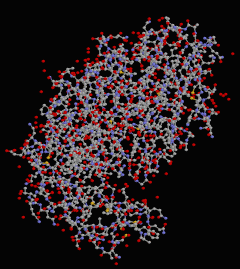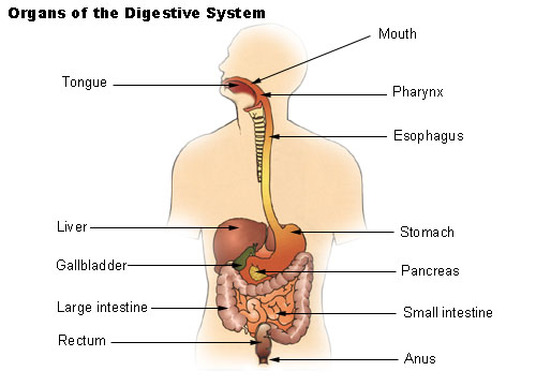Where does your food go?
Food enters through your mouth and to your teeth. After it is chewed, it turns into a liquefied ball in your mouth, called bolus. When you swallow, it pushes the bolus past your pharynx. The epiglottis covers the windpipe and allows the bolus to pass into the esophagus. The body now makes the muscle contractions called peristalsis, they create a wave-like motion to push the food down your ten inch esophagus. The bolus takes six seconds to several minutes to pass through the esophagus and enter the stomach. The stomach is where most digestion takes place, its main job is to digest all types of food that enter your stomach. Food usually stays in the stomach for three to five hours, becoming a yellowish liquid called chyme. The liver is the largest organ in your body that produces bile. Also, it acts as a storage facility by storing iron, vitamins, and glycogen which stores energy for in between meals. It also acts as a filtering device by removing poisons and converting them into safer elements. The gallbladder concentrates and stores bile and releases it into the first part of the small intestine. The pancreas is a long organ located under the stomach that helps break down chyme and regulates the amount of sugar in the blood. The liver, gall bladder, and pancreas are accessory organs, this means that the food does not go through these organs. The chyme now enters the small intestine along with the bile. The small intestine can be between fifteen and twenty feet long! The small intestine is also a warehouse where nutrients get picked up and go into the blood to be distributed to the rest of your body. The main function of the large intestine is to remove water from chyme and prepare it for expulsion. Chyme, now called feces move through the colon into the rectum, when there is a sufficient amount of feces in the rectum, you have to go to the bathroom.
Other Parts

Pepsin Enzyme
- Alimentary canal: A tube that extends from the mouth and all the way down to the rectum.
- Digestive Enzymes: Chemicals that make the breakdown of food speed up.
- Ptyalin: An enzyme that makes some starches in food into sugar.
- Gastric Juice: A digestive juice in the stomach that contains materials like hydrochloric acid and pepsin.
- Pepsin: An enzyme that starts digestion of protein foods.
- Chyme: Partially digested food that passes through the small intestine as a thick liquid.
- Trypsin: A juice in the pancreas that breaks down proteins
- Amylase: A juice in the pancreas that turns starch into simple sugar.
- Lipase: A juice in the pancreas that splits fatty acids and glucerol from fat.

